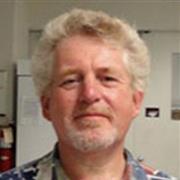People Listing

Ana Campos
Associate Member, Director, School of Interdisciplinary Studies

Patricia Chow-Fraser
Professor, Faculty of Science Research Chair

Rosa da Silva
Associate Professor, Teaching Stream, Associate Dean Of Science (Academic)

Juliet Daniel
Professor, Associate Dean, Research and International Relations

Jonathan Dushoff
Professor, Faculty of Science Research Chair

Marie Elliot
Professor, Department Chair, Faculty of Science Research Chair

Carmel Mothersill
Professor, Canada Research Chair (Tier 1)

Graham Scott
Associate Professor, Canada Research Chair (Tier 2), University Scholar

Jonathon Stone
Associate Professor, Director, Origins Institute, Associate Chair (Undergraduate Studies)

Joanna Wilson
Professor, University Scholar, Associate Chair (Research)
Nicole Smith
Assistant Academic Department Manager (On Leave)
Kathy Greaves
Administrative Assistant - Chair & Administrator (on leave)
Julie Freund
Technician Molecular Biology courses (on leave)
Mihaela Georgescu
Instructional Assistant (Molecular/Genetic/Cell)
Scott Hughes
Instructional Assistant (1M03/Plant/Ecology)
Frank L. Graham
Distinguished University Professor (Emeritus)
Lauren Tiller
Undergraduate Coordinator level 1 courses
Haley Johnson
Academic Program Assistant (Graduate) - on leave
Bithi Eshaque
Technician Molecular Biology courses
Colleen Murphy
Technician Plant Biology and Microbiology courses
Tyler Charlebois
Undergraduate Academic Program Assistant
Sonia Rehal
Instructional Assistant (1A03/Physiology)

Diana Danescu
Assistant Academic Department Manager

Michelle Enzinas
Academic Program Assistant (Graduate)




























